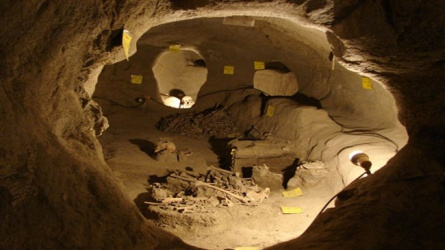Nooshabad’s fifth excavation phase underway

In fact, the underground city comprises compact and complicated structures such as adjoining vestibules.
There are remains of tallow-burners on the walls and places built inside the walls for sitting.
The plan to start new excavations in this historical site was approved and the fifth excavation phase started as of August 2104 after a lapse of eight years.
According to new researches, this underground city dates back to eras even before Sassanid dynasty.
The city, spread over four kilometers, has been dug in three floors underground for remaining immune from theft and plunder.
Abbas Shafeie, manager of Nooshabad Underground City, said, “Parts of the underground city were discovered during 2002-04. An archeological team, headed by Zahra Sarookhani, conducted excavations in the underground city during 2004. The credit was secured by Nooshabad Municipality and Iran’s Cultural Heritage, Handicrafts and Tourism Organization.
The fourth phase started but could not be continued due to the firmness of soil.
Shafeie said the discharge of household wastewater into this historical site is a major problem.
In olden times, people had to dig deep wells under their houses. Therefore, the well diggers connected most of the wells to the underground city.
Shafeie also said the leaching pits were dug for some houses in recent years to dredge the routes of underground city and prevent it from further destruction.
However, an urban sewage system is required to address the huge volume of wastewater being discharged in the site.
Nooshabad City Council and Municipality pursued the implementation of urban sewage system. The project was approved, but no credit has been allocated to it.
The project is to be implemented jointly by ICHHTO, Nooshabad Municipality and Water and Wastewater Company.
Implementation of the project will ease archeological excavations in the region and help open the routes of the underground city.
Shafe’ei attributed the durability of the underground city to the firm clay soil.
In addition, humidity and moisture have made the soil more resistant and sticky, contributing to its durability.
"Currently we need to establish hygrometers at the site to maintain it, because timely control of the humidity would prevent it from drying up and collapsing," he said.
Nooshabad Underground City was been established during the Sassanid era and thrived during the Safavid era.
Old residents of Nooshabad say the underground city terminates at Niasar in Kashan. In olden times, people used to go to Niasar Cave through Nooshabad Underground City.


Your Comment :